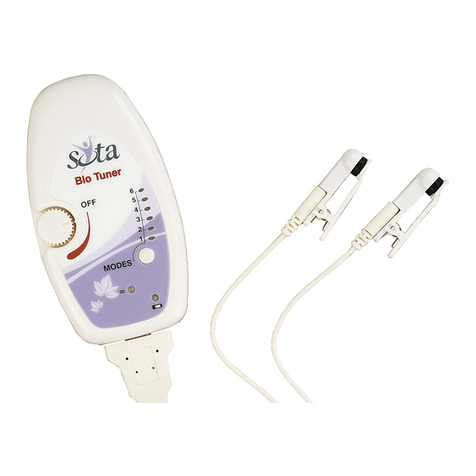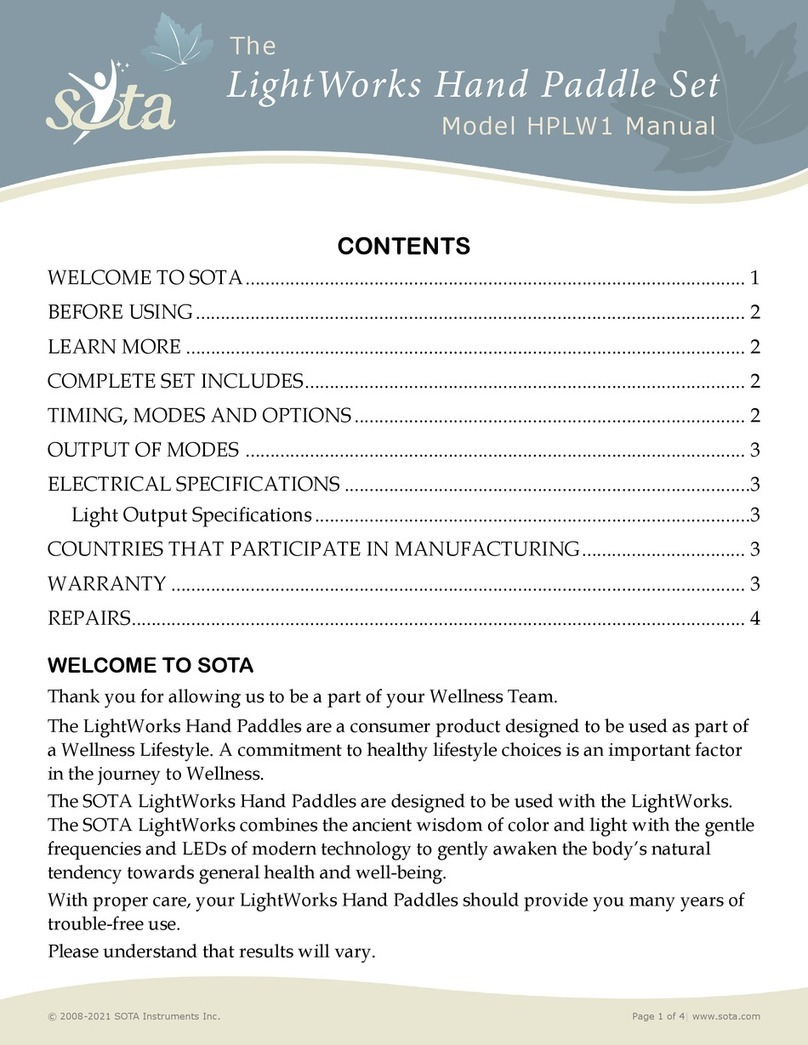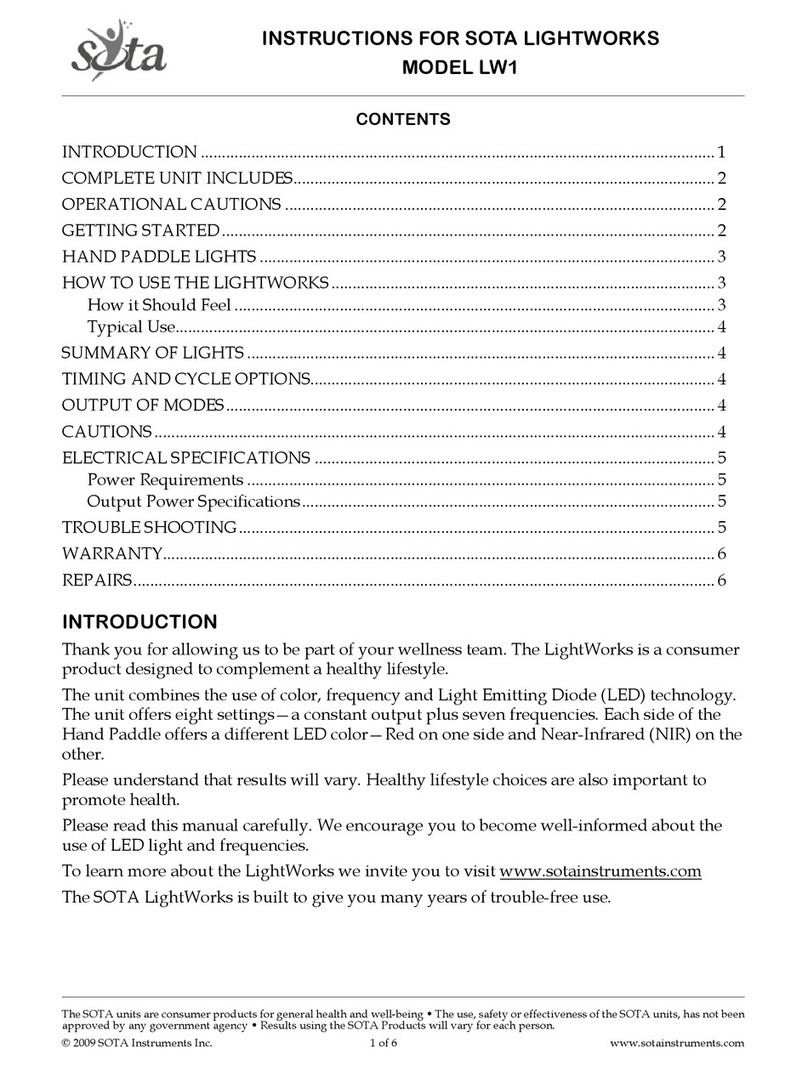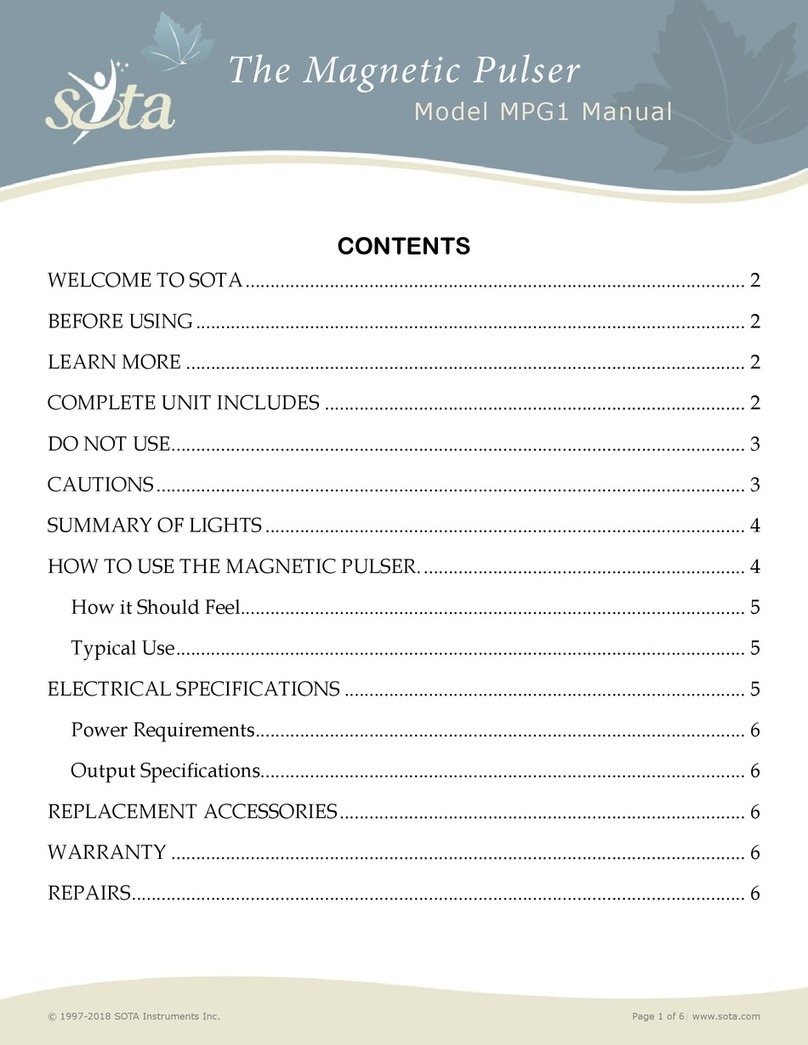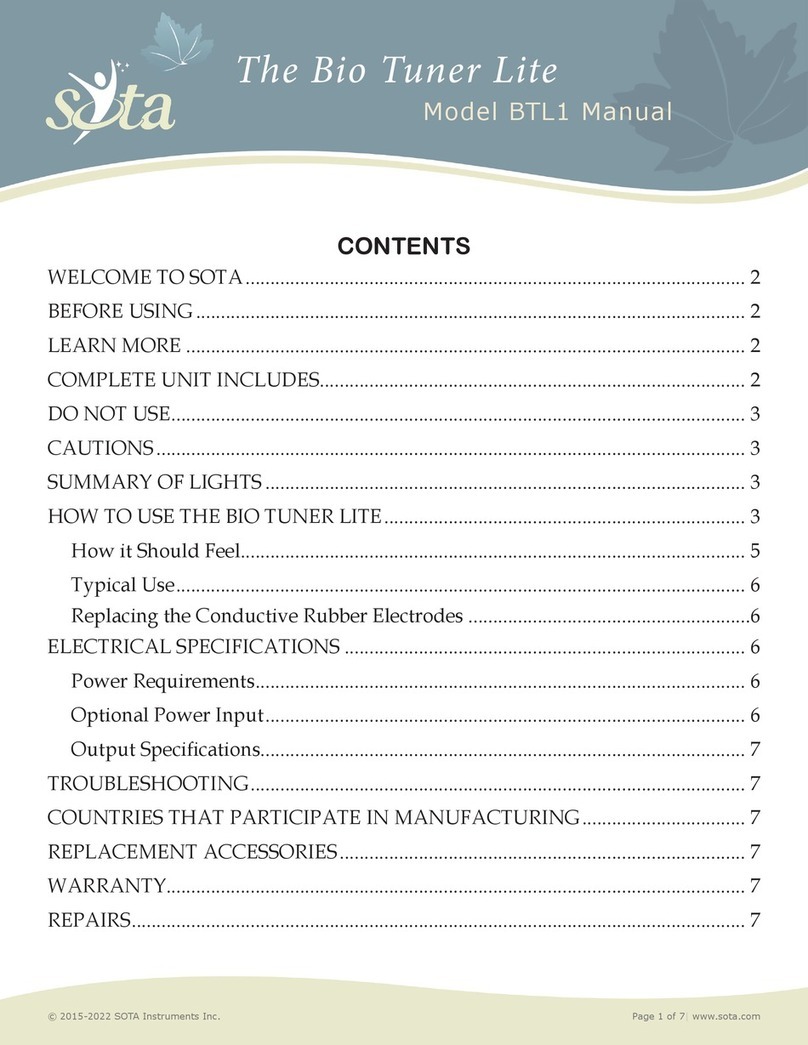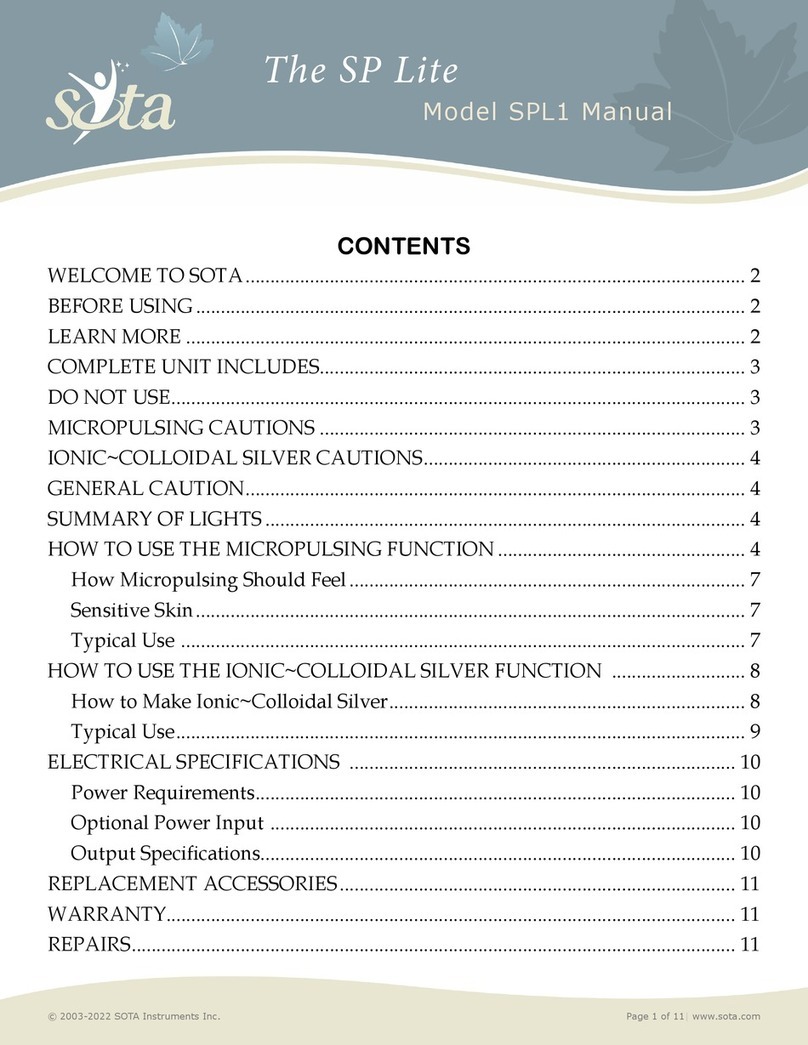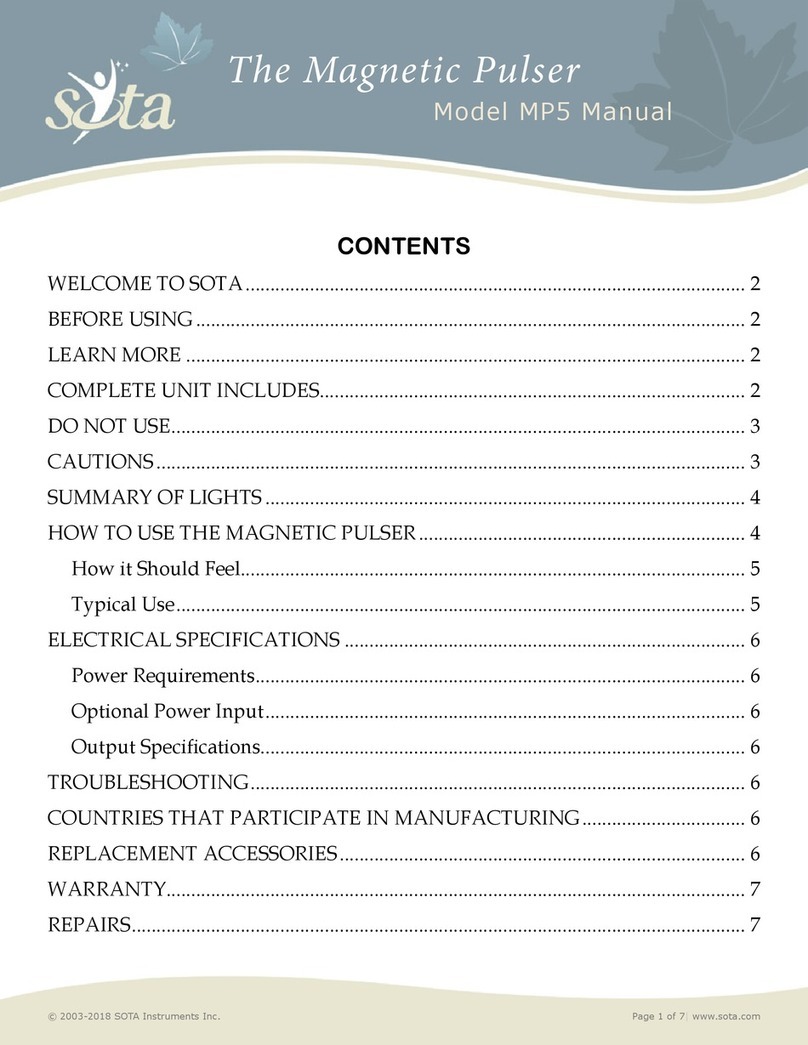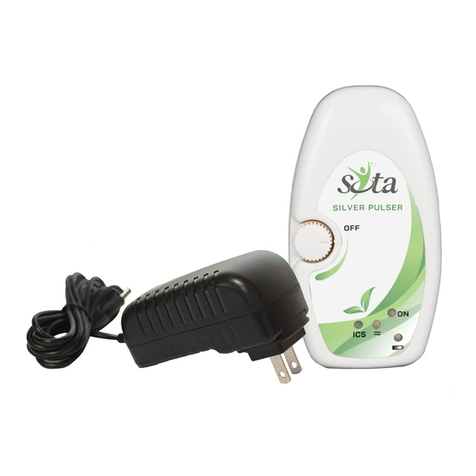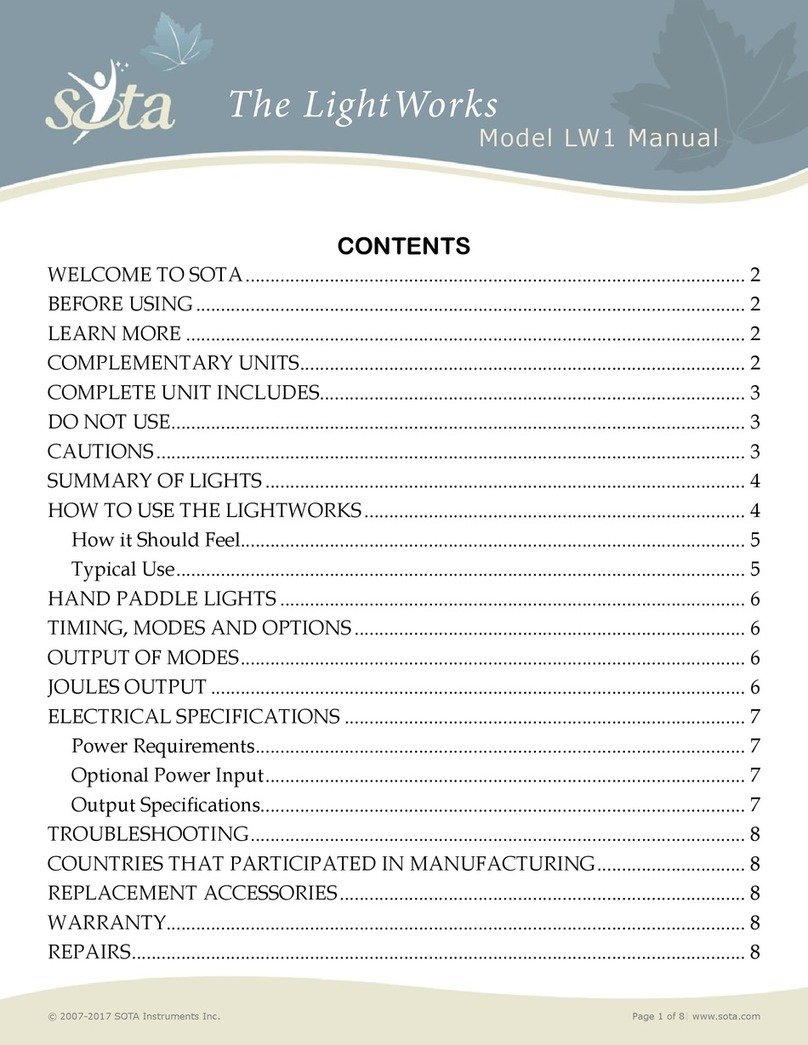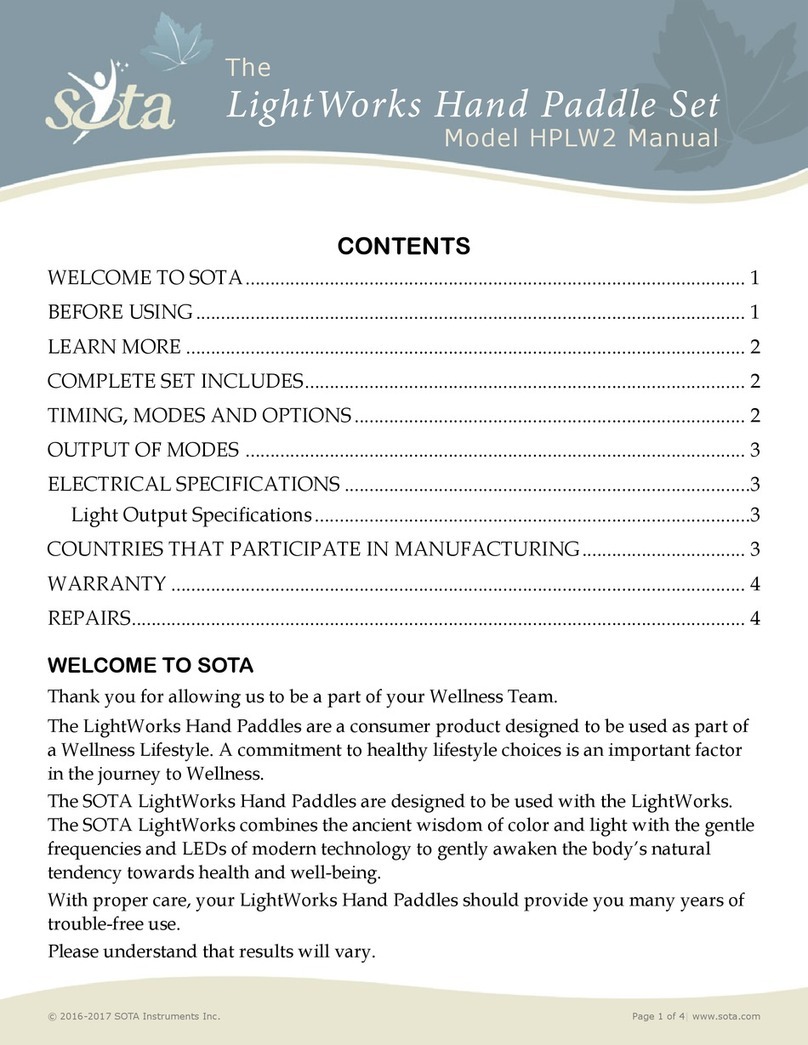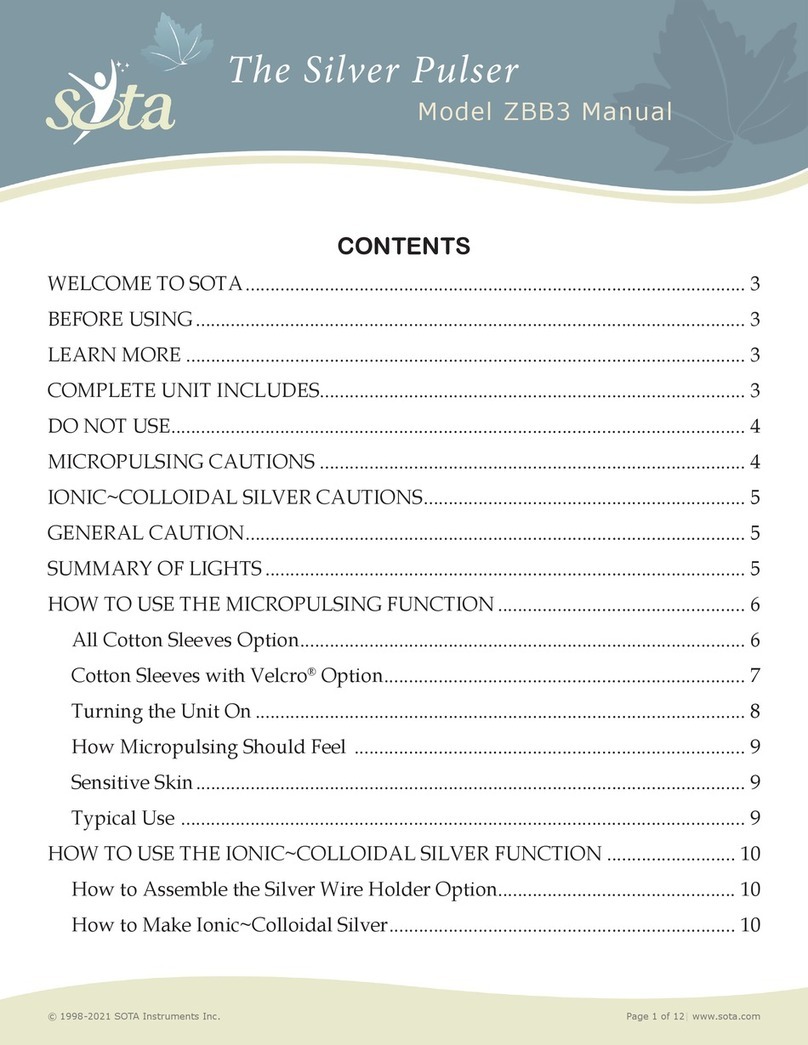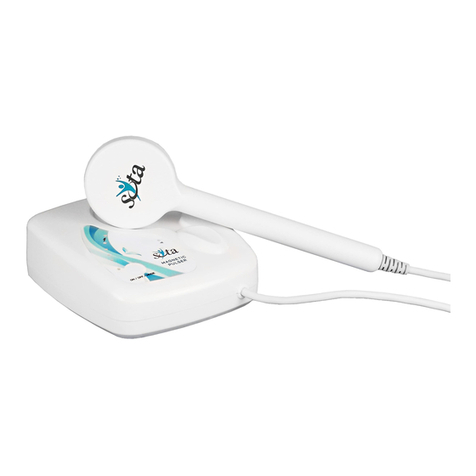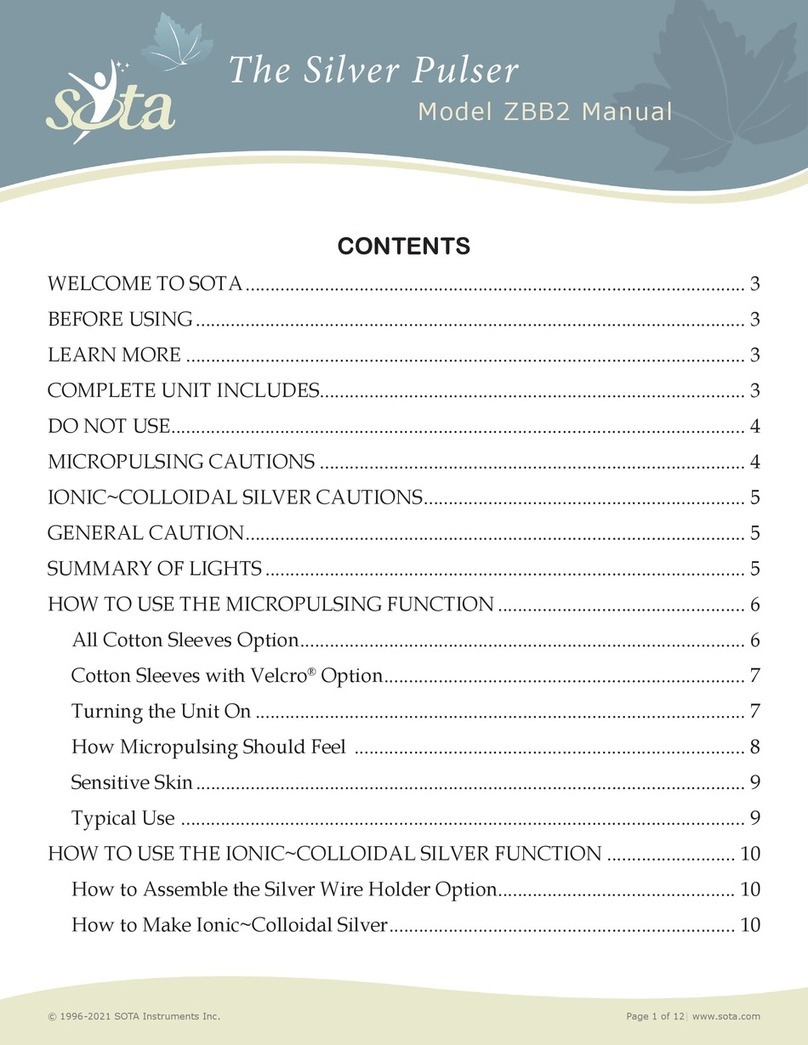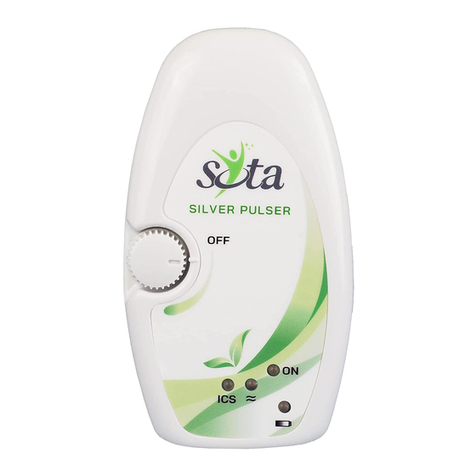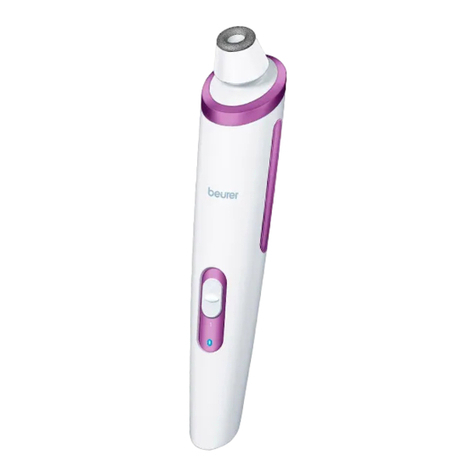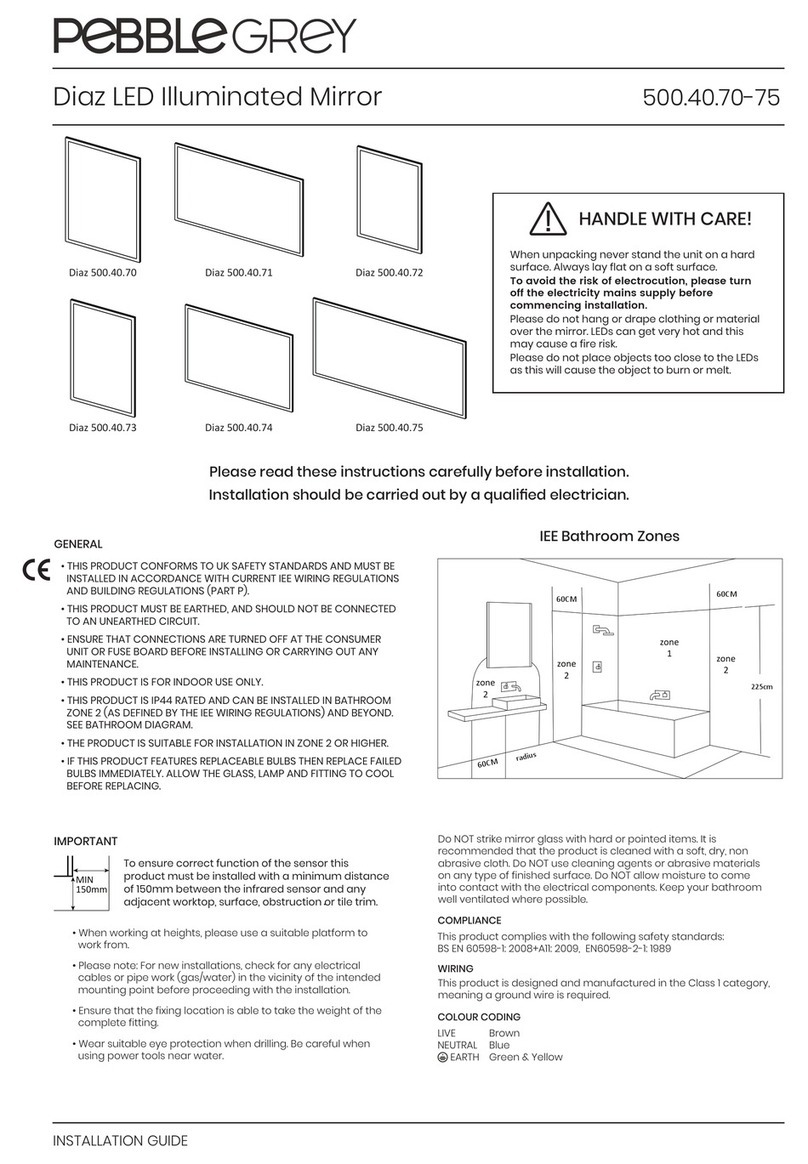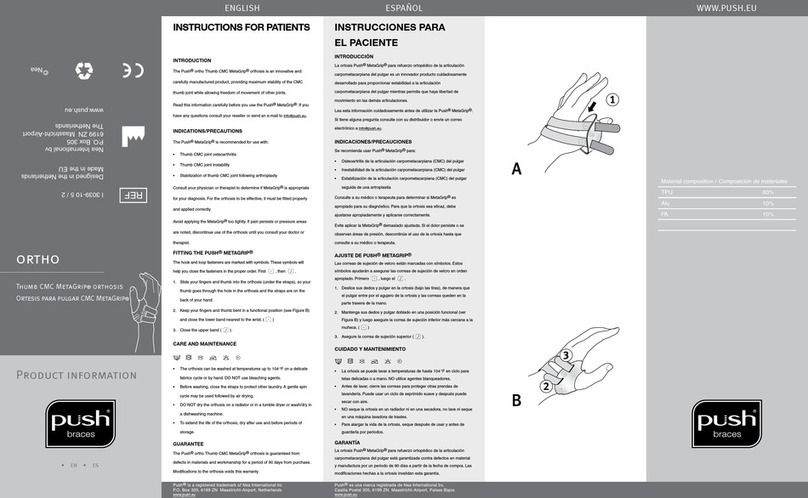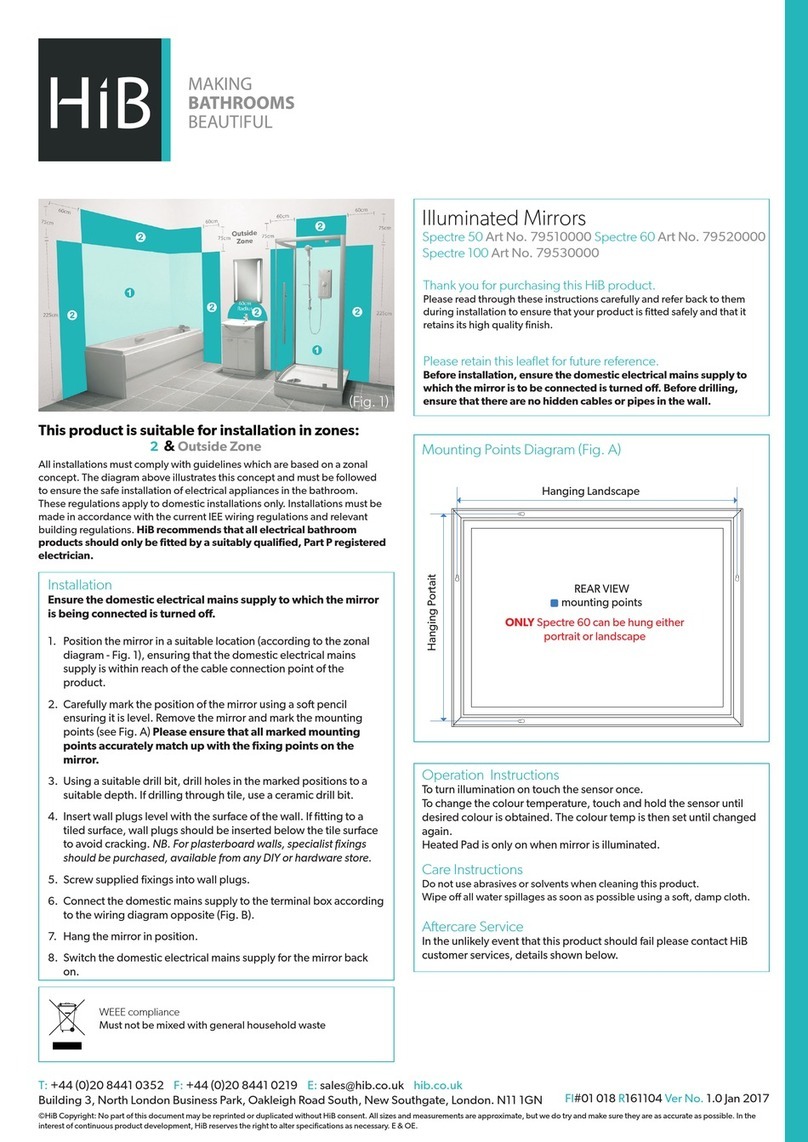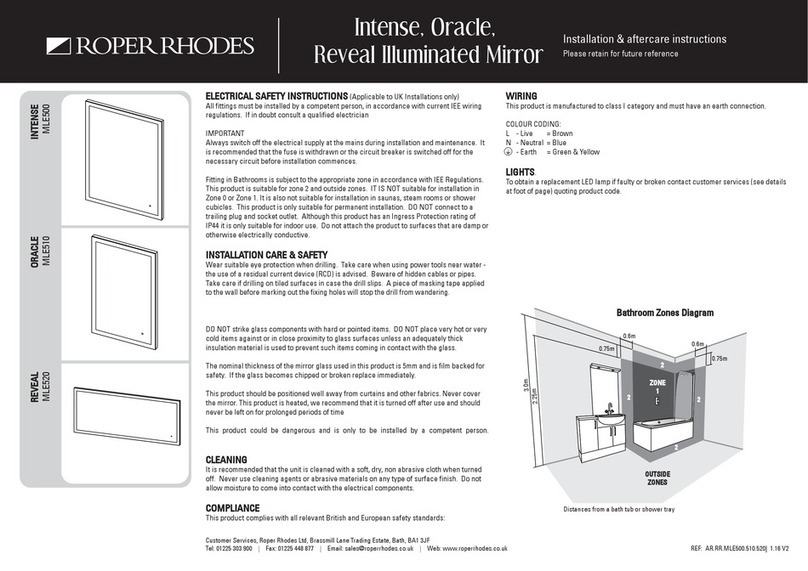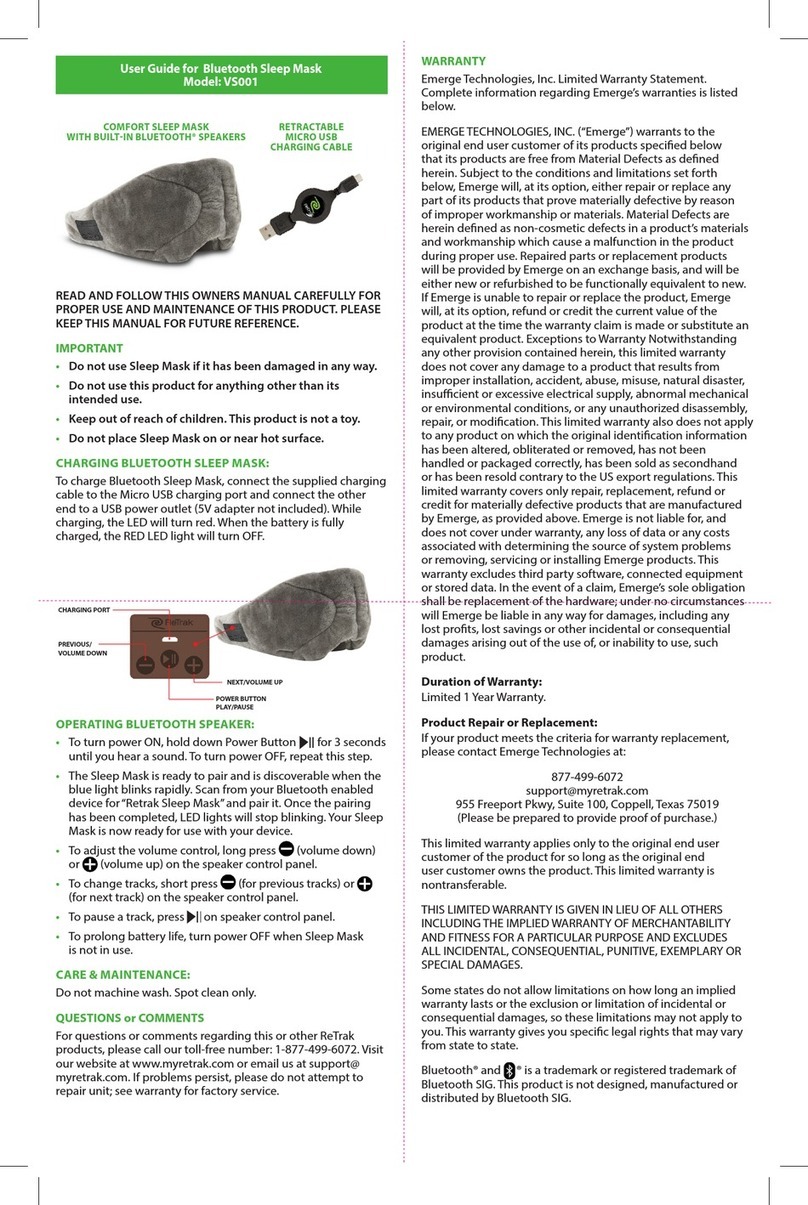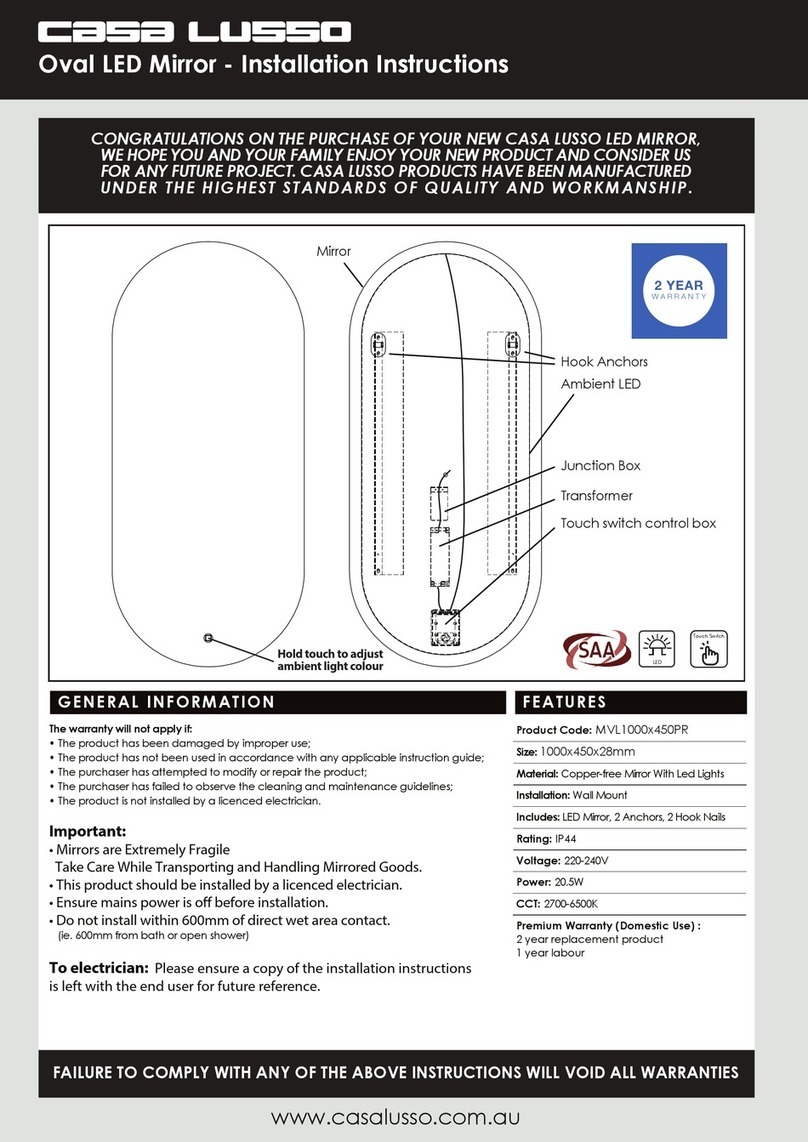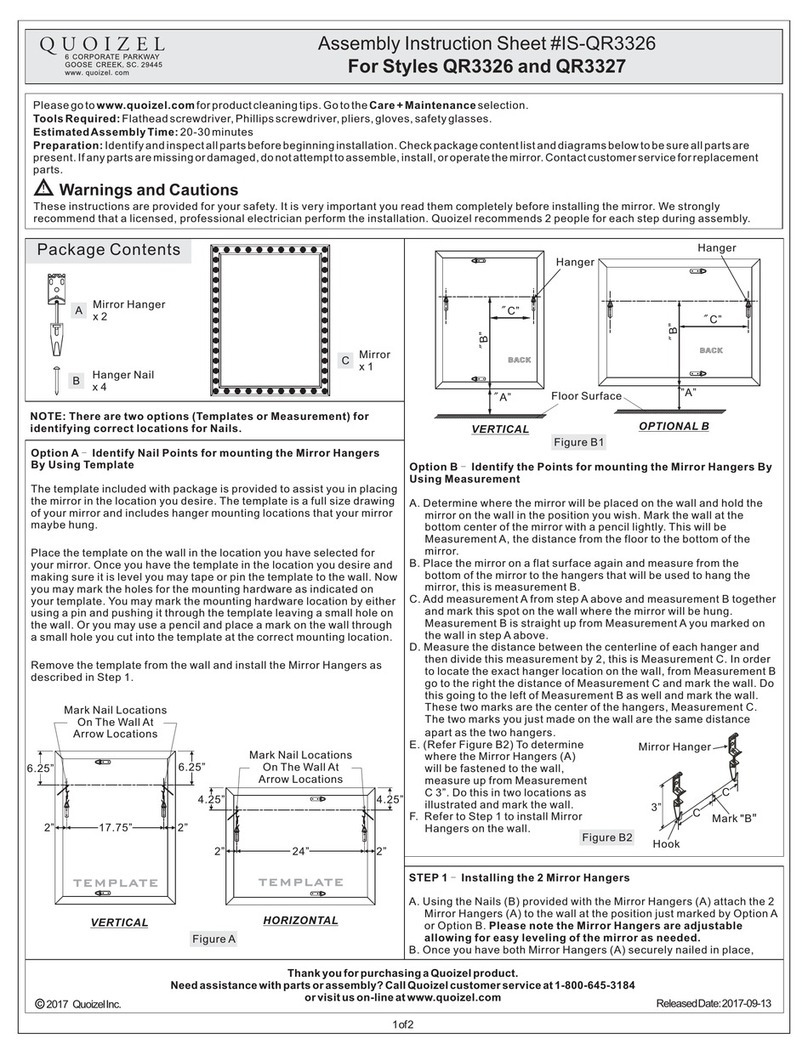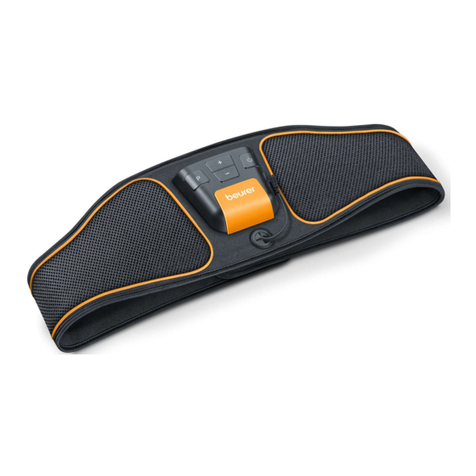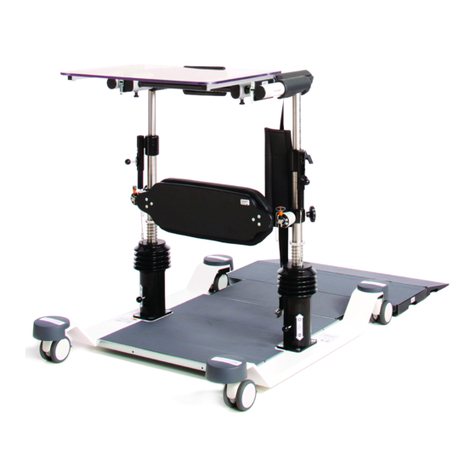
• The SOTA units are consumer products designed to be used as part of a Wellness Lifestyle • The SOTA units are not medical devices nor are they
intended to diagnose, treat or cure any medical or health condition • The use, safety or effectiveness of the SOTA units has not been approved by any
government agency • Please consult a health practitioner for any medical or health condition • Results using the SOTA Products will vary for each
person • Please note that all purchases of SOTA Products are deemed to be made in Penticton, BC, Canada •
© 2015-2019 SOTA Instruments Inc. Page 6 of 6 |www.sota.com
How-to Video — Bio Tuner BT9
Now the next thing is of course if you don’t feel it at all. You’ve gone through all those steps
and you don’t feel it. What to do next. And that’s where we actually have to test the electrical
connection of the wires and we’ll do that next.
Okay this step now is to test the electrical connection of the ear clips and the unit and the
cord. And how we’re going to do that, I’m just going to put the unit down here, I’m going to
remove the ear clips and I’m going to unplug them from the pins. The rst thing I want to do
is make sure that the pins and this electrical connection is working. I want to make sure that
the pins have any residue wiped off. Maybe you just want to do a bit of soap and water and
then wipe it down with a tissue. And then I’m going to touch the two pins together and hold
them between my ngers to make sure that they’re making good contact. I’m going to then
turn the unit up to full intensity and you should see the yellow connection light turned on.
And if that’s the case, that tells me that there’s electricity owing through the wires, through
the probe pin ends and through the USB connection and so far, so good.
Now we want to make sure that the red low battery warning light isn’t on because obviously
you may not be getting the full power going through. And replace your battery if you see
the red light come on at this point. And also note that we’re testing it in Mode 1. The other
modes have actually a lower intensity setting, there’s different things going on there, and you
may not see that connection light come on in any of the other modes so always test this in
Mode 1. Remember we’re just trying to test the electrical connection.
So the next step now, we have tested the pins; we need to test the ear clips. I’m going to put
the unit down. And now I’m going to take each of the ear clips, re-plug in the pins to the ear
clips and what I’d like to do now is to connect the two ear clips together in this fashion where
we have the two conductive rubber black ends touching one another and then you just gently
release the ear clips. This will tend to spring apart on you so just be very careful. Lay it on
the table. Your unit is still turned up fully, and of course we see the yellow connection light
come on.
Now this tells us there must be an electrical connection through the ear clips, through the
pins, through the USB, and that the unit is outputting the full intensity. And this is actually an
indication that everything is working perfectly.
If you don’t see the light at any one of these steps you could have a faulty cord and you may
have to get that replaced. And we’re all set to go. Happy Pulsing!
Note: This video and the transcript are intended to complement the Product Manual that
accompanies your unit. Please be sure to read the complete Product Manual before using
your unit.
